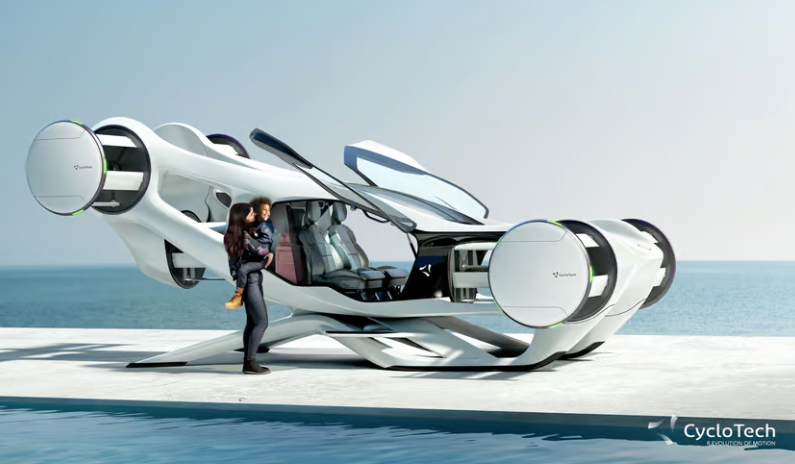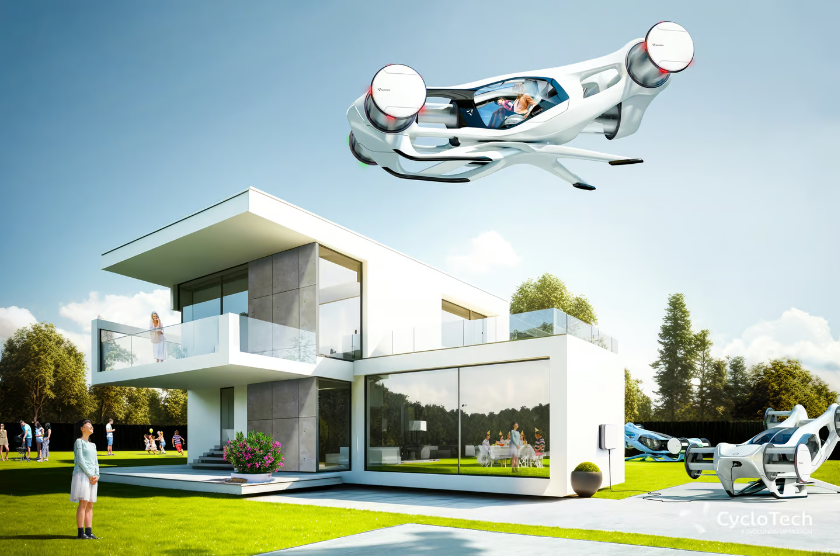The CycloTech CycloRotor eVTOL concept aircraft has been launched. The prototype is coming a decade and a half after CycloTech introduced the concept. The CycloTech CruiseUp features propulsion barrels at each corner and lengthways aft and fore of the cabin. The design and operation of the concept air car is similar to a helicopter’s rotor system.

CycloTech CycloRotor-powered eVTOL – Still a product for the future
The CruiseUp is a two-seat eVTOL air car that can accomplish cross-town air trips It is powered by the CycloRotor propulsion system. The spinning barrels surrounding the eVTOL have walls made of wing blades. The wing blades are designed to tilt while the barrels are spinning using conrods connected to the swashplate. The system generates thrust that peaks at certain points of the rotation.
The barrels of the CruiseUp can be maintained at a constant motor speed which then delivers thrust instantly. The complex design of the eVTOL enables it to operate in gravity and in a similar manner to marine operations. Indeed the Voith-Schneider propeller in marine applications is used to help the craft position expertly and stay in one spot if required. It is powered by six CycloRotors which offer power for upward, downward, and lateral movement.

The development of the CycloTech CruiseUp holds promise in opening new vistas in mobility. It is debatable whether the CycloRotor setup will be more efficient and powerful than electric propellers in the eVTOL. Weight and efficiency considerations are important in the turf of air hops, however short it may be. Lithium batteries are the best storage option currently but improvements could be close by.
The new CycloTech prototype air car is designed as a private air car rather than an air taxi. Its agility is one important feature going forward for the 80kg aircraft. It has a top speed of 150km/h and a range of 100km. The outlook for the development of the CruiseUp is pretty steep. CycloTech estimates that the car will become a production model by 2035. Hopefully, by then, the technology would have solved the storage conundrum and other problems facing the concept air car.
RELATED:
- Volvo is Accelerating Towards a 100% BEV Lineup by 2030
- Nissan’s Latest Q3 2023 Numbers for EVs Signal 376% Year-over-year
- OPPO Find N3 Color Options Revealed In New Images
- Nothing’s CMF Watch Pro to sport a 1.96″ AMOLED display
- Are Snapdragon Processors More Confusing in 2023? Here’s How to Pick the Best Snapdragon Processors in 2023







